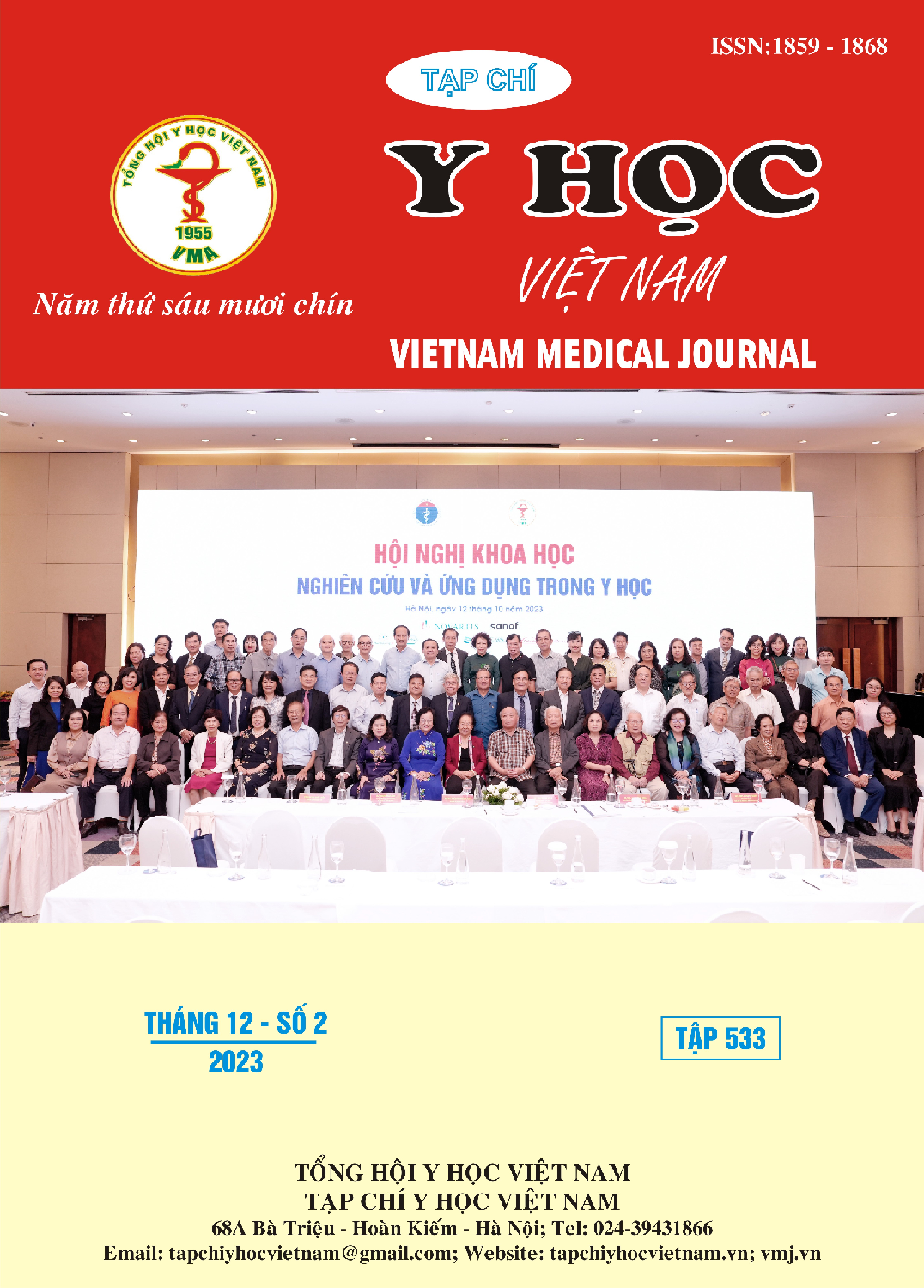BLI COMBINED WITH MAGNIFYING ENDOSCOPY FOR DIAGNOSIS OF GASTRIC DYSPLASIA LESIONS
Main Article Content
Abstract
Objectives: To assess the image characteristics of white light endoscopy, BLI magnification endoscopy in gastric dysplastic lesions and Compare BLI magnification endoscopic images with pathological diagnosis. Subjects and methods: Randomized prospective, cross-sectional descriptive study on 40 patients with gastric dysplastic lesions at the Gastroenterology and Hepatology Center - Bach Mai Hospital from June 2022 to July 2023. Results: The average age was 60.2 ± 10.8 years old, the male/female ratio was 1.86/1. Most lesions were in antrum (72.5%), mainly type 0-IIac (55%), average size was 23,7±11.3mm, of which the majority were >10mm (90%), 82.5% of lesions were irregular or absent of microvascular/microtubule structure. With low-grade dysplasia: mainly type 0-IIa (55.6%), 100% had dividing line, the regular rate of microstubule and microvascular structure accounted for the majority (61.1% and 77.8%); with high-grade dysplasia: mainly type 0-IIac (60%), 100% had dividing line, the rate of irregular in microtuble and microvascular structure accounted for the majority (66.7% and 73.3%). The concordance rate between pathological diagnosis before and after intervention was 70%. Conclusions: BLI magnification endoscopy helps increase the rate of accurate biopsy of lesions suspected of gastric dysplasia.
Article Details
References
2. Bray F., Ferlay J., Soerjomataram I., et al. (2018), “Global cancer statistics 2018: GLOBOCAN estimates of incidence and mortality worldwide for 36 cancers in 185 countries”, CA: a cancer journal for clinicians. 68 (6), pp. 394-424.
3. Zhenming Y, Lei S. Diagnostic value of blue laser imaging combined with magnifying endoscopy for precancerous and early gastric cancer lesions. Turk J Gastroenterol. 2019;30(6): 549-556. doi:10.5152/tjg.2019.18210
4. The Paris endoscopic classification of superficial neoplastic lesions: esophagus, stomach, and colon: November 30 to December 1, 2002. Gastrointest Endosc. 2003;58(6 Suppl): S3-43. doi:10.1016/s0016-5107(03)02159-x
5. Yao K. The endoscopic diagnosis of early gastric cancer. Ann Gastroenterol. 2013;26(1):11-22.
6. Schlemper R. J., Riddell R. H., Kato Y., et al. The Vienna classification of gastrointestinal epithelial neoplasia, Gut. 47 (2), pp. 251-255. Published online 2000.
7. Văn Dũng T, Cảnh Bình N, Doãn Kỳ T, Minh Ngọc Quang P, Thị Ngà Đ. Đánh giá kết quả bước đầu điều trị tổn thương loạn sản và ung thư dạ dày sớm bằng phương pháp cắt tách hạ niêm mạc qua nội soi. VMJ. 2022;520(1A). doi: 10.51298/vmj.v520i1.3760
8. Carlosama-Rosero YH, Acosta-Astaiza CP, Sierra-Torres CH, Bolaños-Bravo HJ. Helicobacter pylori genotypes associated with gastric cancer and dysplasia in Colombian patients. Revista de Gastroenterología de México (English Edition). 2022;87(2): 181-187. doi: 10.1016/ j.rgmxen.2021.09.003
9. Kang HM, Kim GH, Park DY, et al. Magnifying endoscopy of gastric epithelial dysplasia based on the morphologic characteristics. World J Gastroenterol. 2014;20(42): 15771-15779. doi: 10.3748/ wjg.v20.i42.15771


